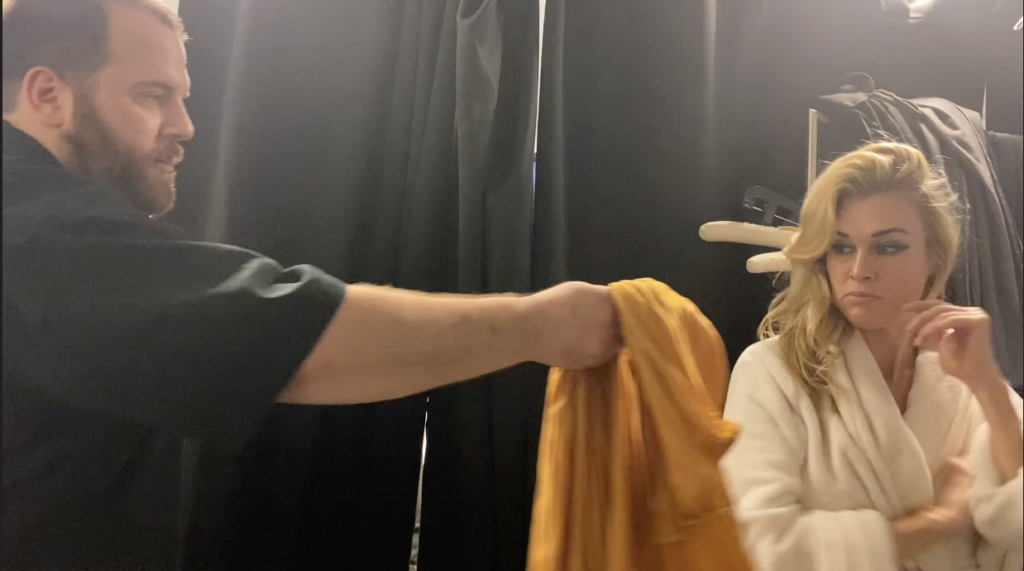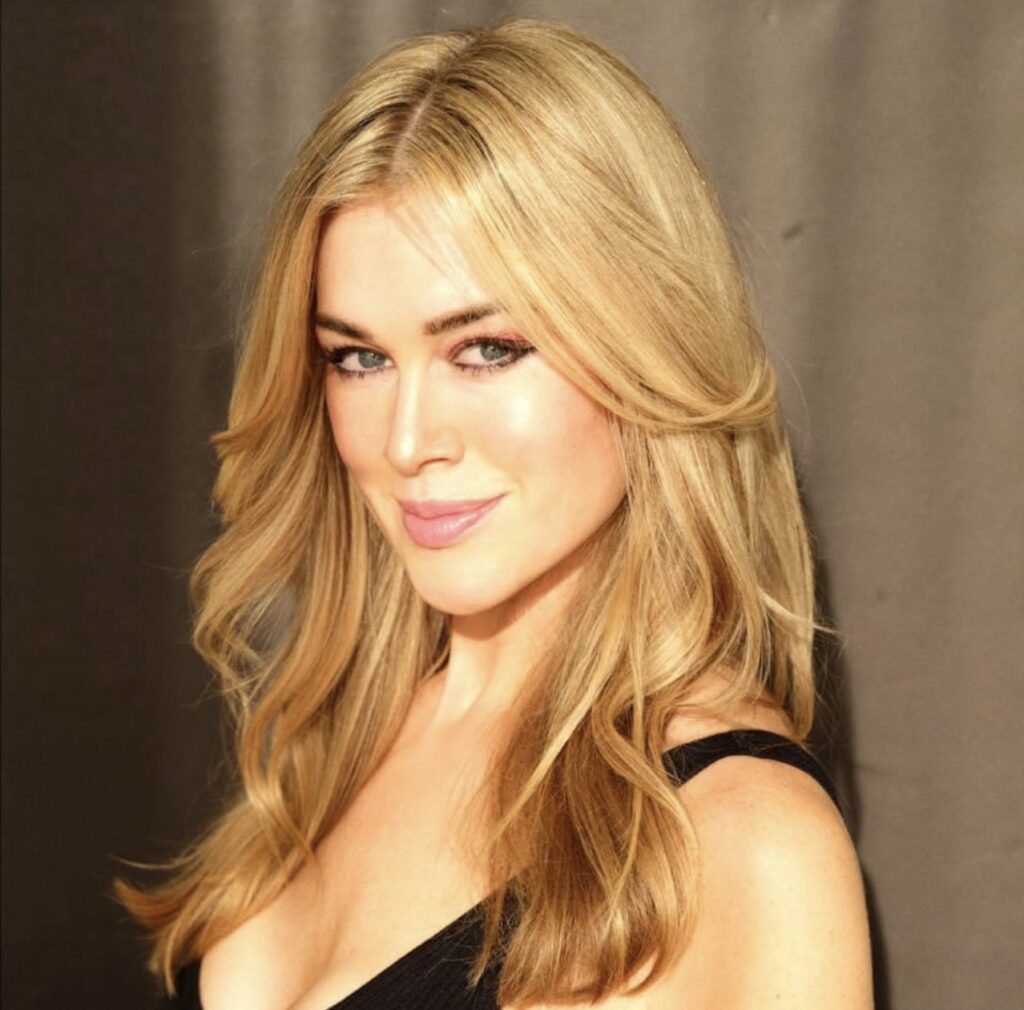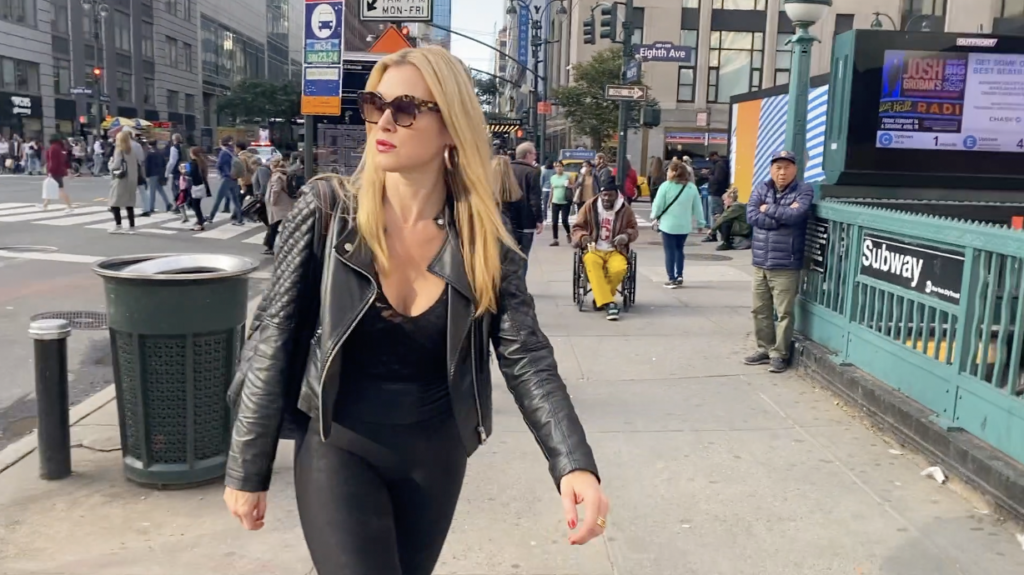
Meet Deirdre Lorenz, a visionary New-York based filmmaker whose latest short film “Return to New York,” entirely filmed and edited on an iPhone, epitomizes her creative spirit and dedication to pushing the boundaries of cinematic artistry.
Can you share a bit about the inspiration behind ‘Return to New York’ and how did your personal experiences influence the creation of the characters and their journey in the film?
When I first moved to New York and hit the ground running in my pursuits as an actor, I would share my stories with people who were close to me. They would tell me that my stories about trying to book roles, as well as my random gig worker jobs, were often more interesting than the actual acting jobs I would land. Of course, my goal was always to land paying acting work so I wouldn’t have to seek other work and could focus on my passion of performing, but everyone knows how difficult that has always been.
At one point, I was introduced to fit modeling work, and was able to secure more and more steady clients. The money started flowing in and I loved it at first. But, I was working so hard and such long hours that I was losing track of my dreams.
So, a few years ago, I started developing a concept of a story centered around what we really wanted to be when we grew up. This is part of my inspiration behind the montages of real people saying what they dreamed of, or currently dream of, becoming. I wanted to create a cinematic story around the human stories of these fierce working models. So many are inspiring, yet humanly flawed, and they are still doing what they have to do to still reach that dream one day.
In ‘Return to New York’, I focus on three women characters who work together and become best friends through their shared struggles in the job that they never wanted. Yes, to specifically answer your question. Yes, I pulled a lot of inspiration for the leading and supporting characters from my personal experiences in this job, although these characters are all completely fictional. Additionally, yes, this is a real job that I have been doing and continue to do today with fashion companies here in New York City. I actually started my own agency a few years ago (Like A Glove Company) and represent myself in my work. As one would imagine, I have ongoing and endless new ideas and storytelling inspiration as an expert in this fascinating, illuminating, sometimes dark, and often funny, field of work.

You mentioned that the film was shot entirely on your iPhone. Could you elaborate on some of the challenges you faced and how you overcame them to create a cinematic experience?
Yes, I shot (and edited) the entire movie on my iPhone. I started the shoot with my iPhone11, and then I finished the shoot with my iPhone 13promax. The biggest challenges were the sound and the cinematic quality. It still has a ways to go for it to be ideal for enlarging to big screens on the visual quality level, and, although these phones have good mics and sound recording, you are limited on how you can edit and clean the audio files that are recorded directly onto the phone. Fortunately, I had an excellent cinematographer for the New York City scenes (Larry Rosen) who filmed the scenes with beautiful finesse, and his high level of expertise helped elevate visual quality issues to acceptable levels for the big screens. As for my sound issues, I actually had to have the actresses ADR the required outdoor scenes by using the audio recording option in their phones, then sending me the finished audio through audio phone messages and WhatsApp. We had to get really creative.
One sound section that I’m most proud of is the series in France with the character Chloe, as well as with the LeCourt family. I had to direct the actors to create audio files that were all added after the visual shoot. If you watch this entire section, you will see that none of the LeCourts actually appear on camera. I directed the performances over the phone to the actors in Paris and Puerto Rico, and the actors recorded the audio with the voice memo app on the phone. Then, I would add the audio file performances that I chose into the Final Cut of the film. I’m so proud of the actors and what they created through their superb performances.
You were the producer, writer, and actor in the film. Was it difficult to wear so many hats when making the film?
It was difficult to be all of these roles, but also challenging and rewarding. When you have a story to tell, and are excited and or passionate about what you are creating, it is an amazing feeling to move the film forward from completely different elements of the story, no matter the size of the step.
Yes, it was difficult wearing so many hats in this production. It takes longer to create when you don’t have a bigger team than we had, but it also gives you a lot more freedom to expand and experiment with the script and filming ideas, and with the actors and their performances. It’s a completely different filmmaking and acting experience when you are working with a micro/no budget production versus a bigger budget with teams of people all focusing on their expertise in the project.
Overall, it was a huge learning experience for me on every level. I learned that I should have done more performance takes in certain scenes, especially the street scenes when we had noisy traffic and pedestrians going by, or when it was raining. More takes would have helped me a lot in editing.
Since I also edited the entire film on my iPhone, I had to teach myself an editing app that would be the best for what I was trying to create. I used a fusion of iMovie and inShot for the editing process.

New York City plays a significant role in the film. How did the city itself become a character in the story, and how did it contribute to the atmosphere you wanted to create?
Ah, yes. New York City is the ultimate star of this show! My character “London” narrates the story and shares her lifelong dream of moving to live in the bright star, NYC. Upon arriving, London shares her enthusiasm for being in what she calls “the center of the universe.” When I was writing and filming the story, I wanted to make sure that our beloved New York City character had many layers of depth, including lots of flaws and highlights. This was very important to the authenticity of “who” and “what” New York City is to London, her circle of friends and their lives.
How did the experience of working on your previous project, feature film “Santorini Blue” shape your approach to making ‘Return to New York’? What differences did you encounter in terms of storytelling and production when working on a feature film compared to working on a short film?
Producing, executive producing and creating an international feature film (‘Santorini Blue’) with creative partners and investors was an unbelievable experience, but was completely different than this short film on every level. It was a huge collaborative effort, and that experience can be amazing, but also very, very complicated and slow. Especially when you have investors and are protecting every dollar on their behalf.
As for how it influenced my approach to making ‘Return to New York,’ one of the biggest points was that I wanted to create it with no budget, no expenses and no financial restraints. I didn’t want making it to be about money. I just wanted to focus on telling this simple story and didn’t want anyone or anything to get in the way. That’s why I decided to use my phone and a skeleton crew (literally one person) to create it. I also wanted to get this story filmed without anyone telling me that I couldn’t include scenes that were meaningful to me, and that I could focus the story on the characters that I had been developing for so long. I’m so grateful to the talented actors (leading roles with me- Leeann Hellijas as Emily and Kirsten Lewis as Chloe) and for my sole crew member (New York cinematographer, special effects, and actor Larry Rosen as Giorgos) who trusted me and believed in the story. He worked hard filming much needed scenes through the hot, crowded streets of New York, on the packed subways, and in the indoor sets, as well. We really got it done and created the movie magic I was hoping for.

The film features three women from different backgrounds forming a strong bond. How did you work on developing their on-screen chemistry and the authenticity of their friendship?
The single best part of working as a real life fit model has been the outstanding women I have met along the way. Most of them, like myself, come to New York to pursue careers in acting. But, they need to pay their bills. So, they start doing this work once they are introduced to it. When I began developing my storyline, I decided that I would cast my hard working fit modeling friends, who are also aspiring and working actors, in the roles. This was vital and important to me. So, these actors already have a deep respect and knowledge of each other that I hope carries through to their on screen characters and friendships.
The film’s characters face obstacles related to finance, family, and the pandemic. How did you approach intertwining these challenges with their pursuit of dreams without losing the film’s sense of hope?
When I started developing the script and story, it was just before the pandemic and I had thought of it as more of a fashion dramedy, lightly reflecting on the highs and lows of the pursuit of dreams in New York City. I wanted to make sure I balanced the experiences and struggles with enough hopeful moments to leave audiences understanding and excited to hear more about the characters’ journeys, specifically with this specific and unusual fashion job as a shared subplot. So, I actually edited a version of the film with only this original concept, including a short twist ending. This film is also in the film festival circuit right now, and is titled “No Regrets.”
When the pandemic hit New York City in March of 2020, everything literally collapsed in the arts and fashion worlds. Hopes and dreams were decimated for so many. I understand that this is a privileged dream to even have a chance to pursue, but it is still a dream, nonetheless, and I decided to expand the idea of these hustling women into the unexpected chapter of the pandemic. I maintained my dramedy theme through expanding the storylines of where my original three main characters would have likely gone based on their imagined lives, backgrounds, and ultimate aspirations. I also tried to weave in common relatable Covid and life threads like London continuing to drink too much, companies not paying gig workers on time- or at all, boyfriend living situations, affordable housing, and so many people shifting careers and going back to school, among other things. I think that thoughtful audiences have related to these themes, and that integrating them gave a hopeful glimmer to life after many dark days.
What specific discussions or reflections do you hope ‘Return to New York’ will prompt among viewers?
There are a few topics I hope will linger in viewers’ thoughts and discussions after watching. I hope to have briefly enlightened people on the unique world of fashion fit modeling and the kinds of people who are working in the field. Of course, there is much more than presented here, and, if I am able to expand this film beyond festivals, I hope to share a lot more of the behind the scenes in the fashion world. There are so many talents, and also some insane characters who would be sure to entertain viewers.
Reflecting even broader, I’d love to spark conversation on what people wanted to be when they were young, and even as they got older. Careers and jobs are not set in stone anymore. So, perhaps watching ‘Return to NY’ will have viewers reminiscing about childhood dreams, and maybe open themselves up to pursuing new dreams even now.
In ‘Return to New York,’ the characters’ journey takes them from New York to France and another country. Could you give us a glimpse into how these different settings contribute to the characters’ growth and challenges?
New York City is an international mecca of artists, entrepreneurs, and talents of so many forms. This is a key underlying theme of ‘Return to New York.’ So, I wanted to make sure the leading characters were all originally from different places. These ambitious and determined woman made their way to New York from other places in the world, and then have to figure out their next path once the pandemic hits. I decided that these characters would have chosen these paths away from New York under each person’s circumstances. And, with London being the biggest gambler of the group, it made sense that she’s the one trying to convince all of her friends to join her in pursuing the very hopeful new opportunity, which will also be a way to make ends meet until the arts and fashion worlds reopen.
Because of the international nature of New York City, I wanted to have a subplot that the characters are brought together by the city, pulled apart by the pandemic, and then, hopefully, unified again. The last country that is featured as part of the film has a special meaning, but that is a discussion for another day. I don’t want to give the story away.
